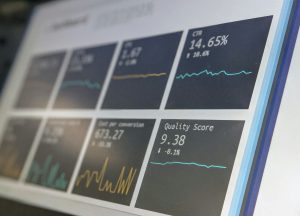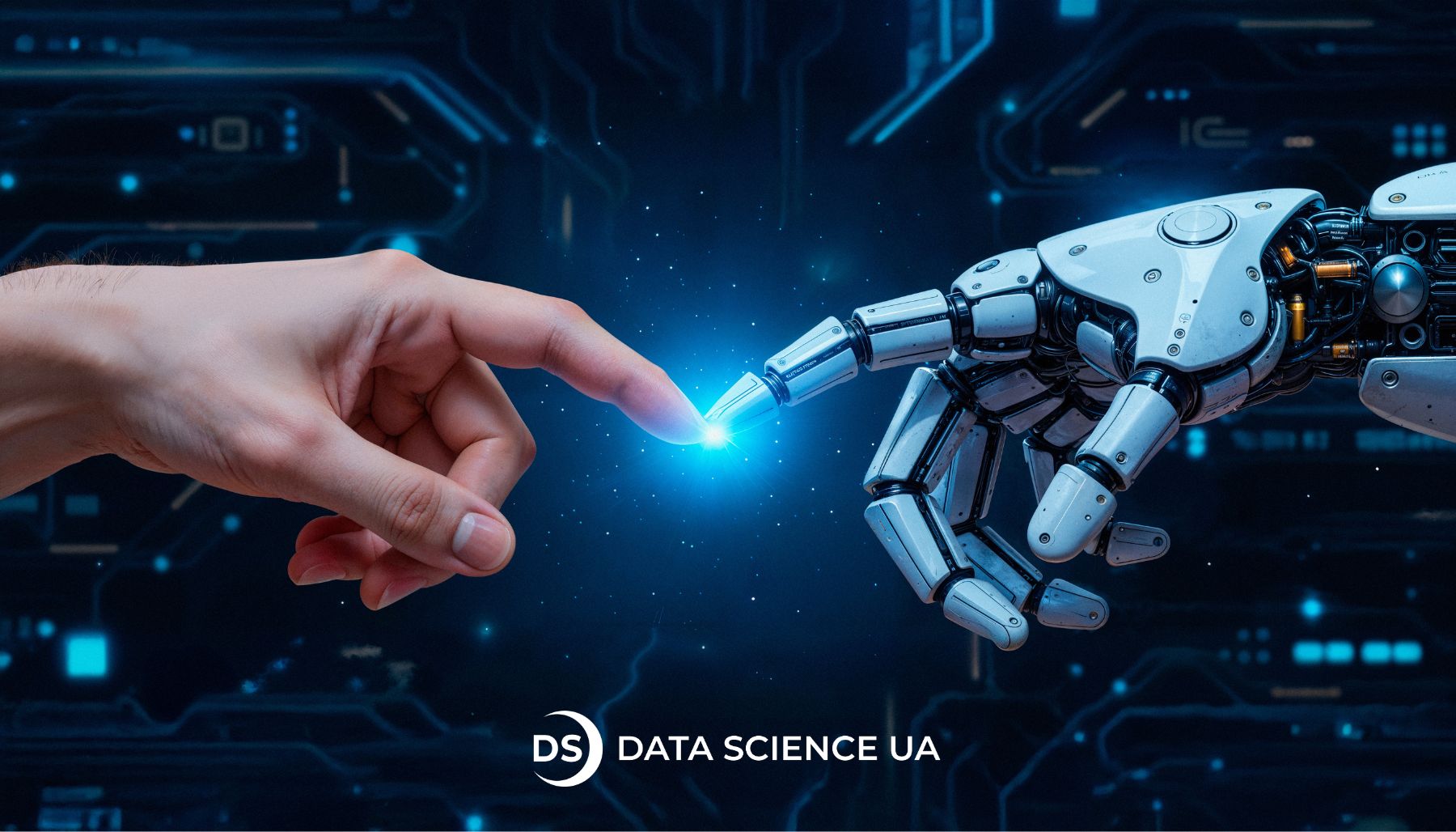2025 guide to fine-tuning Large Language models
In 2024 LLMs are at the forefront as AI is changing fast. Most industries are experiencing changes owing to these models, as they facilitate better comprehension and generation of natural languages. This article brings an overview of what is LLM fine-tuning, how to fine-tune LLM. It also includes insights, best practices of LLM finetuning, and practical applications to help you maximize these models.
A Look at How Pre-trained Language Models Work
Large language models begin with pre-training, where they learn from large data sets containing books, articles, websites, and more. This form of unsupervised learning gives LLMs a chance to understand the patterns of language, context, and meaning.
It allows them to view the words relative to all other words in the sentence, rather than one at a time. This ability helps them create sentences that make sense and are relevant to context.
Consider a pre-trained model processing the sentence “The cat sat on the mat”. During pre-training, the model is trained on a large corpus of text using self-supervised learning tasks, such as predicting masked words (e.g., “The [MASK] sat on the mat”) or the next sentence. Through this process, the model learns to capture linguistic patterns, such as subject-verb-object relationships, the meanings of individual words, and contextual relationships between words. This foundational “in-language” knowledge is crucial for the model’s performance on various downstream tasks, like sentiment analysis or question answering, as it provides a general understanding of language that can be fine-tuned for specific applications.
 Image from Unsplash (source)
Image from Unsplash (source)
What Does Finetuning an LLM Involve?
LLM finetuning is adapting a pre-trained model to perform well on a specific task or domain. It involves further training using a relatively small task data set. What is the purpose of fine-tuning large language models? The objective is to gain the general knowledge of languages that the model has learned while moving towards addressing specific requirements.
GPT-4 presented by OpenAI is a pre-trained and fine-tuned model capable of reading, analyzing, and expressing ideas in a clear and structured manner. Essentially, if you need it to analyze a text, you simply input the text into the model. It processes the information, studies it, and delivers the desired outcome. The key advantage is that you don’t need to train the model from scratch. Instead, you use it as a ready-made foundation and fine-tune it to perform the specific tasks you need.
Key Stages in the Life of Large Language Models
Defining the Vision and Scope
Before diving into fine-tuning, it’s relevant to define the vision and scope of your project. This may include, but is not limited to: What specific problems do you intend to solve? Who are your target users? Knowing user needs and context can make a huge difference when fine-tuning.
A medical startup dealing with developing a virtual assistant that caters to patient inquiries could define its vision as providing accurate medical information with observance of regulations, while answering questions related to symptoms, medicine, and appointments.
Choosing an Appropriate Model
Choosing an appropriate pre-trained model will help to ensure project success. Different models differ in architecture, training data, and also the area of specialization. RoBERTa, for example, is fit for classification tasks, whereas T5 is great for text generation and summarization. This decision should therefore consider both the specific needs of your project and the available computational resources.
If you need to extract insights from medical records, a model like BioClinicalBERT will be an ideal option. Pre-trained on biomedical text and clinical text, it’s highly efficient in health-related NLP tasks.
Adjusting Performance Metrics
Performance metrics quantify the model’s performance. Depending on whether a task is classification, generation, or summarization, you may want to adjust metrics such as accuracy, precision, recall, or F1-score. Benchmarks in this case will be set based on particular thresholds. This will help you steer your fine-tuning process in the right direction.
You might want to focus more on precision and recall in a sentiment analysis task to ensure that your model labels positive and negative sentiments from customer reviews correctly.
Continuous Evaluation and Iteration
LLMfinetuning is not a one-time thing. Continuous evaluation on the validation datasets becomes super necessary for performance monitoring, detecting faults, and making modifications. Do an iteration to make sure that your model stays true to the progressive project objectives.
A company fine-tuning a model for product recommendations might begin by testing it on a small dataset of user interactions. If initial results show that the model struggles to recommend niche or less popular products, they could iterate by:
– Adding more diverse training examples to capture underrepresented scenarios.
– Adjusting hyperparameters like learning rate or batch size to refine the training process.
Launch and Deployment
At this stage, after LLM fine-tuning is complete, the model is deployed by integrating it into applications to ensure it performs well in real-world scenarios. Successful deployment requires ongoing monitoring and evaluation to address any issues that arise. Actively collecting and considering user feedback regarding the system’s performance is crucial to refine the model further and maintain its effectiveness over time.
After LLM fine tuning for virtual assistant, the deployment will involve integrating it into a mobile application where users can ask questions and get immediate responses.
 Image from Unsplash (source)
Image from Unsplash (source)
When to Apply Fine-Tuning
Fine tuning LLM is particularly beneficial when dealing with:
- Niche Domains: Specialized domains like medicine, finance, or law require the need to understand specific languages.
- Specific Tasks: For applications like sentiment analysis, text classification, or customer support, where a fine-tuned model would make a big difference.
- Improving Accuracy: If the pre-trained model doesn’t perform optimally for your tasks, then fine-tuning will enhance its capabilities.
Example Scenarios for Fine-Tuning
- Healthcare: A hospital fine-tunes a model in order to assist doctors with patients’ symptom diagnoses based on their description.
- Finance: A fintech startup tunes a model to analyze market sentiment from financial news articles.
The Fine-Tuning Process: How it works
Fine tuning LLM models typically involves several stages:
- Dataset Preparation: You should prepare a dataset that is representative of the task at hand. This may involve cleaning, labeling, and augmenting the data.
- Model Training: Continue training the pre-trained model on the prepared dataset with a smaller learning rate to fine tune it gradually.
- Hyperparameter Optimization: Experiment with Learning Rates, Batch Size, and Other Hyperparameters for the Best Performance. Grid Search or Bayesian Optimization Techniques might be useful here.
- Evaluation: Check the model’s performance on the validation data to see any changes and further modifications that are needed.
News article collections and their summaries would generally form the training data for an improvement in summarization model projects. Pre-processing, fine tuning large language models, adjusting hyper-parameters based on performance on the validation set, and finally, summarization capability evaluation on unseen articles comes next.
 Image from Unsplash (source)
Image from Unsplash (source)
Different Fine-Tuning Techniques for LLMs
Llm fine–tuning can be achieved in many ways, but it always depends on what exactly is needed for any particular task.
Instruction-Based Tuning
Instruction tuning involves fine-tuning a model on datasets designed to improve its ability to follow specific instructions or structured queries provided in prompts.
A model might be fine-tuned on a dataset containing pairs of legal texts and their layman summaries, improving its ability to simplify legal terminology.
Complete Fine-Tuning
Full fine-tuning entails re-training of the entire model on the new dataset. This is extremely costly in computational cost but will most likely lead to astonishing improvements in performance on specialized tasks.
A research organization may start with an out-of-the-box, general-purpose LLM, tune it thoroughly on a dataset of scientific literature, and come up with a tailored model for writing academic papers.
Efficient Parameter Tuning
This involves tuning of only a subset of model parameters. In its most common form, the implementation of adapters enables fine-tuning without changing the complete model, which saves computational resources. The original model remains unchanged, while additional adapter matrices are created and trained to adjust specific layers of a Neural Network.
A company developing a chatbot will adjust adapter layers, so that they can fine-tune only specific parts of the model; this is because they want to retain general knowledge but specialize in customer queries.
Alternative Fine-Tuning Techniques
Sequential Tuning Approaches
Sequential fine-tuning involves fine-tuning a model progressively over a range of tasks or datasets. This is usually done to adapt a model to diverse scenarios while retaining foundational knowledge.
Example: Sequential Tuning
Pretraining could be fine-tuned on customer support conversations and then further on technical support, while still retaining much of its understanding of both contexts.
 Image from Unsplash (source)
Image from Unsplash (source)
Fine-Tuning Guidelines and Best Practices
Well-Defined Task
Before the fine-tuning process begins, a clearly defined task is required. This clarity helps in the selection of the right data and performance metrics.
Example: Task Definition Clarity
Any retail company considering the use of LLMs for recommendations on products must define clearly what it actually means by successful recommendations, for example, conversion rates or user satisfaction.
Model Selection
Choose a model that aligns with your data and task requirements. Consider factors like model size, architecture, and pre-training objectives.
Example: Model Selection Criteria
For a project focused on generating creative writing, selecting a model known for its creativity, like GPT-3, would be more advantageous than a model optimized for factual accuracy.
Optimizing Hyperparameters
One of the critical steps in fine-tuning machine learning models for the best performance on a given task is hyperparameter optimization. Hyperparameters such as learning rate, batch size, or dropout rate are parameters that largely affect how the model is going to perform and generalize. Using Optuna, this can be simplified by automating the search for the best configurations by systematically trying out different combinations of parameters.
While automation brings efficiency, there are critical considerations for rebalancing. Without due caution, the process of optimizing hyperparameters may turn into overfitting, where a model is overly adapted to the training data and generalizes poorly with new, unseen data. Techniques like cross-validation have to be applied to check the generalizability of the model at this stage.
Automated tools, such as Optuna, are powerful; still, they shouldn’t totally replace human expertise. The tools may optimize some metrics—say, loss minimization—but not account for broader factors such as domain-specific nuances and long-term performance goals. Human judgment is important in the interpretation of results and making informed adjustments.
In a text classification task, systematically tuning the learning rate and batch size using grid search or Bayesian optimization has been shown to improve model performance and generalization.
Performance Assessment
Periodically evaluate the model, performance on validation datasets. This will help in finding further improvements and to check if the model has reached the desired level of performance benchmark.
Utilizing confusion matrices and ROC curves while evaluating a binary classification model may help to pinpoint relative weaknesses, informing the focus of subsequent fine-tuning attempts.
 Image from Unsplash (source)
Image from Unsplash (source)
Use Cases for Fine-Tuning
There are extremely diverse practical uses of LLM finetuning across various industries. Below are some of the more common use cases:
Analyzing Sentiments
Fine-tuned models can accurately analyze and interpret sentiments in customer reviews, social media posts, and other textual data, giving businesses valuable insights.
Example: Sentiment Analysis in E-commerce
An online retailer could fine-tune a model to understand customer sentiment from product reviews, so with data science platform development firm they can make marketing strategies based on customer feedback.
AI-Powered Chat Solutions
Fine-tuning LLMs for chat applications enables models to handle user queries with improved contextual understanding and tailored responses, enhancing customer support and user experience. Fine-tuning should include measures to mitigate risks of generating biased or inappropriate responses.
Example: Virtual Customer Assistants
Companies like Drift and Intercom fine-tune models to create bots that answer frequently asked customer questions, respond in real-time, and free human agents to work on higher-value inquiries.
Generating Summaries
Fine-tuned models can perform both extractive and abstractive summarization, generating concise and informative summaries of long texts to aid information retrieval and comprehension. Fine-tuning ensures the model adapts to domain-specific vocabulary and style requirements.
Example: Automated News Summarization
News organizations fine-tune models for abstractive summarization of daily news articles, enabling readers to quickly grasp key points in a human-readable format while maintaining the original meaning.
Why Businesses Should Consider Fine-Tuning Models
Higher Accuracy and Relevance
Fine-tuning makes the model more accurate in its outputs, which are relevant for specific user requests.
Example: Accuracy within Financial Service
During financial analysis, it is possible to get more accurate predictions from fine-tuned models by closely monitoring historical data trends regarding specific markets.
Model Accuracy
Fine-tuning improves the model’s accuracy through targeted training and enables its use in crucial applications reliably.
Example: Accuracy in Medical Diagnostics
A healthcare provider may use a fine-tuned model in disease diagnosis to give them better rates of accuracy and results for their patients.
Personalized Interactions
Fine-tuned models can deliver personalized experiences, adapting responses based on user preferences and historical data.
Example: Personalized Marketing Campaigns
E-commerce platforms use fine-tuned models to analyze customer behavior and generate personalized product recommendations, enhancing user engagement.
Handle Unique Scenarios
Fine-tuning equips the models for handling better any specific or complex situations and to provide solutions to those situations for which general models cannot give a solution.
Example: Specialized Customer Support
A telecom company fine-tunes a model on customer support logs, enabling it to understand technical jargon and specific troubleshooting scenarios, thereby improving response accuracy and customer satisfaction.
Fine-Tuning Initiatives by Data Science UA
Data Science UA has introduced several fine-tuning initiatives on various sectors such as healthcare, finance, education, among others. Our customized models have achieved high steps in improving accuracy and user satisfaction in various applications. Now, you can read more about our outsourcing image processing services on the website.
- Healthcare Applications: The development of fine-tuned models in patient triage systems that classify the urgency of patient inquiries.
- Educational Tools: Utilize fine-tuned LLMs to help grade students’ essays and offer each of them personalized feedback.
 Image from Unsplash (source)
Image from Unsplash (source)
Preventing Errors in LLM Fine-Tuning
Avoiding Overfitting
Overfitting is when a model has learned the training data too well, due to which it loses its ability to generalize well. This can be improved by using early stopping and dropout.
Example of Overfitting Prevention
As you are training your model for text classification, you could track the validation loss to identify an early-stopping point-when performance starts to get worse on the validation set.
Handling Underfitting
Underfitting happens when a model fails to capture the underlying data patterns. Ensuring sufficient training data and appropriate model complexity can address this issue.
Example: Addressing Underfitting
If a sentiment analysis model consistently performs poorly, it may indicate that the model architecture is too simple or that insufficient data is being used.
Guarding Against Catastrophic Forgetting
One of the most important things to do when fine-tuning a model is to avoid catastrophic forgetting, in which the model forgets knowledge that it had learned earlier. This might be partly prevented by using techniques such as rehearsal and progressive neural networks.
Example of Catastrophic Forgetting Prevention
When fine-tuning a model for a new domain, you could periodically retrain on a subset of the original dataset to reinforce previous knowledge.
Avoiding Data Leakage
Data leakage happens when knowledge of the test set accidentally creeps into the training. Establish strict data handling practices to prevent this from happening.
Example: Mitigating Data Leakage
During the building of a recommender system, ensure that test data for testing a model are different from the actual training data, ensuring integrity in performance measurements.
Fine-Tuning vs. RAG Approaches
The choice between fine-tuning and retrieval-augmented generation is a task requirement. Fine-tuning is preferred for specialized applications, while RAG is preferable for real-time applications requiring information retrieval.
Example: Decision-Making Process
For a customer support application in which responses have to be based on current information regarding the latest product, RAG would be more suitable than fine-tuning because it enables the model to draw in current data.
Closing Remarks
Now you know more about how to finetune LLM! As long as the right measures are undertaken and the details of the process are well understood, opportunities arise for the application of LLM in diverse areas leading to better user experience and solutions in different fields of industry.
FAQ
What is the main purpose of fine-tuning LLMs?
The major purpose of fine-tuning LLMs is to adapt pre-trained models to specific tasks or domains, enhancing their relevance and performance in targeted applications. Fine-tuning enables organizations to utilize the vast knowledge captured during pre-training while adapting the model for particular needs, such as improving performance on niche tasks, increasing accuracy, or aligning the model’s behavior with specific user expectations. Fine-tuning is more efficient than training from scratch when data is limited, but it still requires a reasonable amount of high-quality task-specific data to be effective.
Which datasets are ideal for fine-tuning?
Ideally, fine-tuning datasets should be paradigmatic of the given task-that is, relevant to the output wanted from the model. The examples are customer service chat logs in the case of a chatbot model, and for a model doing legal analyses, fine-tuning datasets could include legal documents. Above all, it needs high-quality labeling and diversification enough to represent the various scenarios the model would encounter during real-world usage. Other preferences include the fact that the dataset is large enough to effectively learn on the model, while at the same time not so big that it becomes unmanageable. However, data augmentation in NLP tasks is complex and not always a suitable substitute for high-quality, diverse data.
When fine-tuning is advised
Pre-trained models are recommended for fine-tuning when they fail to deliver desired performances for specific tasks or deal with specialized domains. Fine-tuning finds its perfect applications in cases where:
- Domain Specificity: Specialized terminology or context is involved with the application, such as for medical or legal applications that general models may not cope with.
- Performance Improvement Needs: Fine-tuning can help a model achieve business goals if its performance metrics, such as accuracy or F1 score, fall below expectations.
- New Data Availability: When new, high-quality, labeled datasets that better reflect the requirements of a specific task become available, fine-tuning is a way for the model to adapt and improve.
User Feedback: Fine-tuning, if the model is not performing as per the user interaction feedback, would refine the response to more closely meet user needs.
Fine-Tuning and Transfer Learning
Fine-tuning involves further training a pre-trained model on task-specific data, while transfer learning refers to adapting a model trained on one task for use in another. Fine-tuning is a specialized form of transfer learning focused on refining the model for a particular application.
Key Differences:
- Scope: Transfer learning can involve adapting a model to a completely different task or domain, while fine-tuning typically focuses on improving performance for a specific task.
- Data Needs: Fine-tuning often requires a smaller, task-specific dataset, while transfer learning may utilize a broader set of data from a related domain.
- Methodology: In fine-tuning, the model’s weights are updated based on the new task data, while transfer learning might involve freezing some layers of the model to retain the learned features from the original task.
Understanding these differences allows practitioners to choose the right approach based on their specific needs and constraints.





